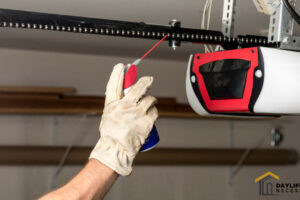If you’re looking to make your home more energy-efficient and comfortable, insulating your walls is a fantastic way to achieve this.
But what if you’re worried about the mess and cost of removing your drywall to install insulation? Fret not!
In this guide, we’ll show you the ingenious ways to insulate walls without removing drywall, keeping your space cozy without the hassle. Let’s dive right in!
Understanding the Need for Wall Insulation
Before we jump into the methods, it’s essential to grasp why insulating your walls matters.
Proper insulation helps regulate indoor temperatures, making your home warmer in winter and cooler in summer.
It also reduces energy consumption and cuts down on utility bills.
Types of Wall Insulation Materials
There are various insulation materials you can use to upgrade your walls. Fiberglass batts and spray foam are popular options.
Fiberglass batts are easy to install and cost-effective, while spray foam provides excellent coverage and seals gaps effectively.
Tools You’ll Need
Gathering the right tools is crucial for a smooth insulation process. You’ll require a utility knife, caulk gun, measuring tape, and a stud finder, among others.
These tools ensure precision and efficiency during installation.
Safety First: Precautions During Insulation
Working with insulation materials requires safety precautions. Wear protective gear like gloves, goggles, and a mask to prevent skin irritation and inhalation of particles.
Ensure proper ventilation in the area you’re working in.
Identifying Wall Cavities
Before proceeding, identify the cavities between the wall studs. Use a stud finder to locate the studs, then mark the spaces between them.
This step helps you know where to insert the insulation material.
Insulating with Fiberglass Batts
Fiberglass batts are a DIY-friendly option. Cut the batts to the appropriate size using a utility knife and fit them into the wall cavities.
Make sure they’re snug but not overly compressed, as this can reduce their insulation effectiveness.
Using Blow-in Insulation
Blow-in insulation, such as cellulose or mineral wool, is perfect for existing walls.
Drill small holes into the drywall and use a blower to insert the insulation material. The holes can be easily patched up later.
The Magic of Spray Foam Insulation
Spray foam insulation expands to fill every nook and cranny, creating an airtight seal.
It’s ideal for sealing gaps around windows, doors, and electrical outlets. Remember, a little spray foam goes a long way!
Insulation for Soundproofing
Insulating your walls also has the added benefit of soundproofing. If reducing noise between rooms is a priority, consider using acoustic foam panels or mass-loaded vinyl in combination with your insulation material.
Vapor Barriers and Moisture Concerns
When insulating walls, it’s essential to consider moisture. In humid environments, adding a vapor barrier between the insulation and drywall can prevent moisture buildup and mold growth.
Patching and Finishing
Once you’ve completed the insulation, patch up the holes or gaps you’ve created. Use joint compound to cover drill holes and gaps, then sand the area for a smooth finish. You can repaint or redecorate as needed.
Enjoy the Benefits
Congratulations! You’ve successfully insulated your walls without removing the drywall. Now, revel in the improved comfort of your home, lower energy bills, and the satisfaction of a DIY job well done.
Read More:
- The 10 Best Water Seal For Wood of 2023: A Comprehensive Review
- Top 6 Best Battery for Sump Pump Backup of 2023: Power Outages No More
- Top 7 Best Hot Water Heater for Large Family of 2023: A Comprehensive Guide
- Top 13 Best Water Heater for Hard Water of 2023: A Comprehensive Review and Buying Advice
Conclusion
insulating walls without removing drywall is a smart way to enhance your home’s comfort and energy efficiency.
With the right materials, tools, and a bit of know-how, you can tackle this DIY project and enjoy the benefits for years to come.
Say goodbye to chilly drafts and hello to a cozier living space!
Frequently Asked Questions
Q1: Can I insulate exterior walls using these methods?
Absolutely! The methods discussed work for both interior and exterior walls, helping you maintain a consistent indoor temperature.
Q2: Will insulating my walls make my home feel stuffy?
Not at all! Proper insulation allows for regulated airflow, preventing a stuffy atmosphere and maintaining indoor comfort.
Q3: Are these methods cost-effective?
Yes, they are. DIY insulation methods are generally more budget-friendly than tearing down walls for installation.
Q4: Can I use these techniques for older homes?
Indeed, these methods are suitable for older homes and can significantly enhance their energy efficiency.
Q5: How much can I save on energy bills after insulating my walls?
Savings vary, but homeowners typically see a noticeable reduction in their energy bills after insulating their walls effectively.




